Discover 15 hidden attractions, cool sights, and unusual things to do in Salisbury (United Kingdom). Don't miss out on these must-see attractions: Salisbury Cathedral, The Salisbury Museum, and Old Sarum. Also, be sure to include The Rifles Berkshire and Wiltshire Museum in your itinerary.
Below, you can find the list of the most amazing places you should visit in Salisbury (England).
Table of Contents
Salisbury Cathedral
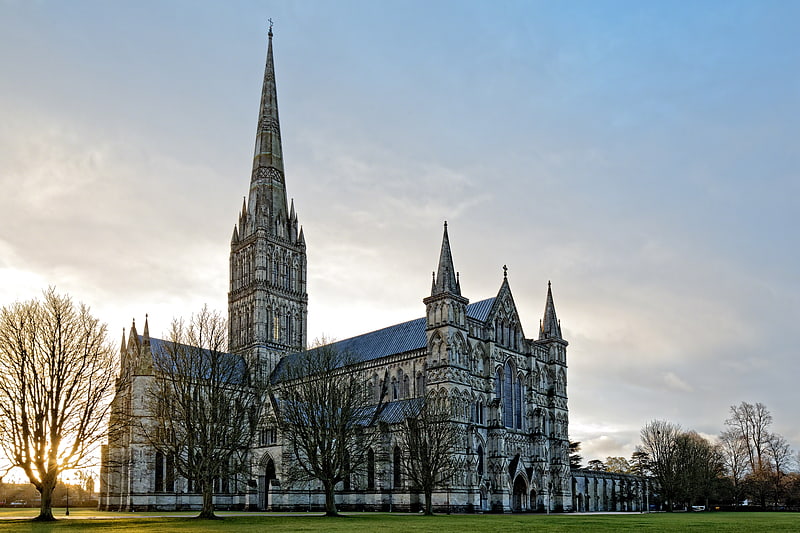
Medieval edifice housing the Magna Carta. Salisbury Cathedral, formally the Cathedral Church of the Blessed Virgin Mary, is an Anglican cathedral in Salisbury, England. The cathedral is the mother church of the Diocese of Salisbury and is the seat of the Bishop of Salisbury.
The building is regarded as one of the leading examples of Early English Gothic architecture. Its main body was completed in 38 years, from 1220 to 1258.
The spire, built in 1320, at 404 feet (123 m), has been the tallest church spire in the United Kingdom since 1561. Visitors can take the "Tower Tour", in which the interior of the hollow spire, with its ancient wooden scaffolding, can be viewed. The cathedral has the largest cloister and the largest cathedral close in Britain at 80 acres (32 ha). It contains a clock which is among the oldest working examples in the world, and has one of the four surviving original copies of Magna Carta. In 2008, the cathedral celebrated the 750th anniversary of its consecration.[1]
Address: 6 The Close, SP1 2EJ Salisbury
The Salisbury Museum

Museum in Salisbury, England. The Salisbury Museum is a museum in Salisbury, Wiltshire, England. It houses one of the best collections relating to Stonehenge and local archaeology.
The museum is housed in The King's House, a Grade I listed building, where King James I of England was entertained in 1610 and 1613. Set in the surroundings of the Cathedral Close, the museum faces the west front of Salisbury Cathedral. Previously at 40-42 St Ann Street, where it had been founded in 1860 by Dr Richard Fowler, FRS, it transferred to its current site in 1981.
The original three-storey building, with mullioned and transomed windows, ornate plaster ceilings and a fine oak-balustraded staircase, houses the main temporary exhibition gallery with the ceramics gallery above. The arms of James I's eldest son, Henry Frederick, Prince of Wales, can be seen in a window in the Wedgwood gallery upstairs.
The director of the museum is Adrian Green.[2]
Address: 65 The Close, SP1 2EN Salisbury
Old Sarum
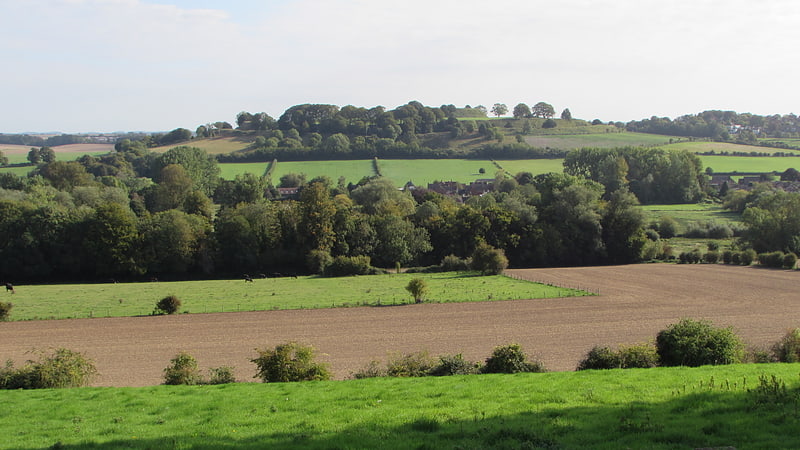
Historical landmark in Salisbury, England. Old Sarum, in Wiltshire, South West England, is the now ruined and deserted site of the earliest settlement of Salisbury. Situated on a hill about 2 miles north of modern Salisbury near the A345 road, the settlement appears in some of the earliest records in the country. It is an English Heritage property and is open to the public.
The great stone circles of Stonehenge and Avebury were erected nearby and indications of prehistoric settlement have been discovered from as early as 3000 BC. An Iron Age hillfort was erected around 400 BC, controlling the intersection of two trade paths and the Hampshire Avon. The site continued to be occupied during the Roman period, when the paths were made into roads. The Saxons took the British fort in the 6th century and later used it as a stronghold against marauding Vikings. The Normans constructed a motte and bailey castle, a stone curtain wall, and a great cathedral. A royal palace was built within Old Sarum Castle for King Henry I and was subsequently used by Plantagenet monarchs. This heyday of the settlement lasted for around 300 years until disputes between the Sheriff of Wiltshire and the Bishop of Salisbury finally led to the removal of the church into the nearby plain. As New Salisbury grew up around the construction site for the new cathedral in the early 13th century, the buildings of Old Sarum were dismantled for stone and the old town dwindled. Its long-neglected castle was abandoned by Edward II in 1322 and sold by Henry VIII in 1514. Edward Rutherfurd's 1987 novel Sarum traces the history of the town.
Although the settlement was effectively uninhabited, its landowners continued to have parliamentary representation into the 19th century, making it one of the most notorious of the rotten boroughs that existed before the Reform Act of 1832. Old Sarum served as a pocket borough of the Pitt family.
Old Sarum is also the name of a modern settlement north-east of the monument, where there is a grass strip airfield and a small business park, and large 21st-century housing developments.[3]
Address: Castle Rd, SP1 3SD Salisbury
The Rifles Berkshire and Wiltshire Museum
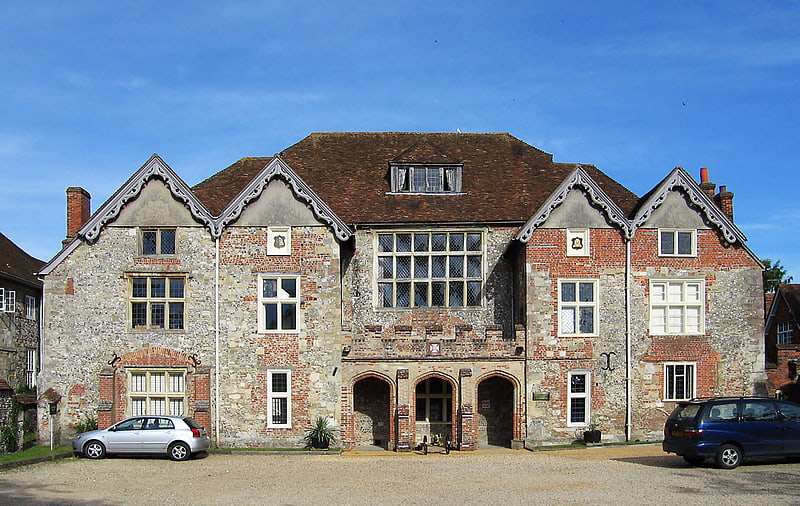
Museum in Salisbury, England. The Rifles Berkshire and Wiltshire Museum is a military museum at The Close in Salisbury, England. It is housed in a Grade II* listed building known as The Wardrobe.[4]
Address: 58 The Close, SP1 2EX Salisbury
Mompesson House
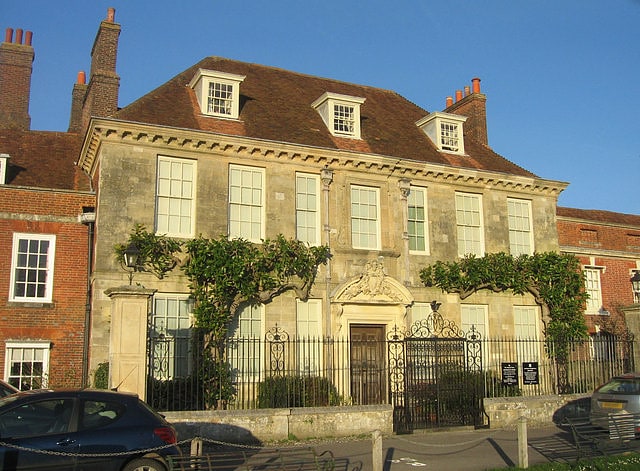
18th-century house with glasses display. Mompesson House is an 18th-century house located in the Cathedral Close, Salisbury, Wiltshire, England. The house is Grade I listed. and has been in the ownership of the National Trust since 1975.[5]
Address: Cathedral Close, Salisbury
Arundells
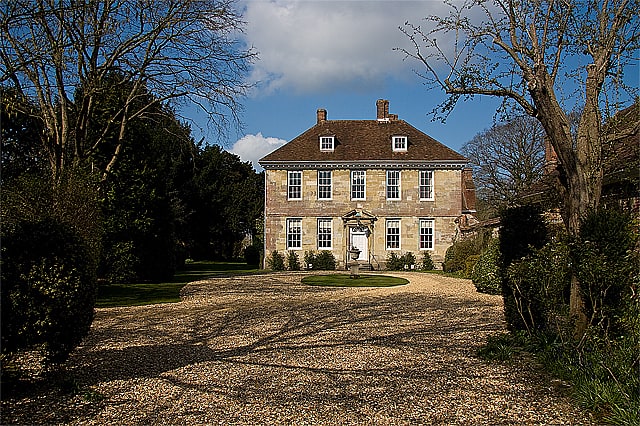
Historical place museum in Salisbury, England. Arundells is a Grade II* listed house at 59 Cathedral Close, Salisbury, Wiltshire, England. Located on the West Walk of the Close, next to the 'Wardrobe', it was the home of Edward Heath, the former Prime Minister of the United Kingdom, from 1985 until his death in 2005.
The house and its extensive garden are open to the public five days a week from late March to late October each year.[6]
Address: Salisbury, 59 Cathedral Close, Salisbury SP1 2EN, Wiltshire, England
Salisbury Guildhall
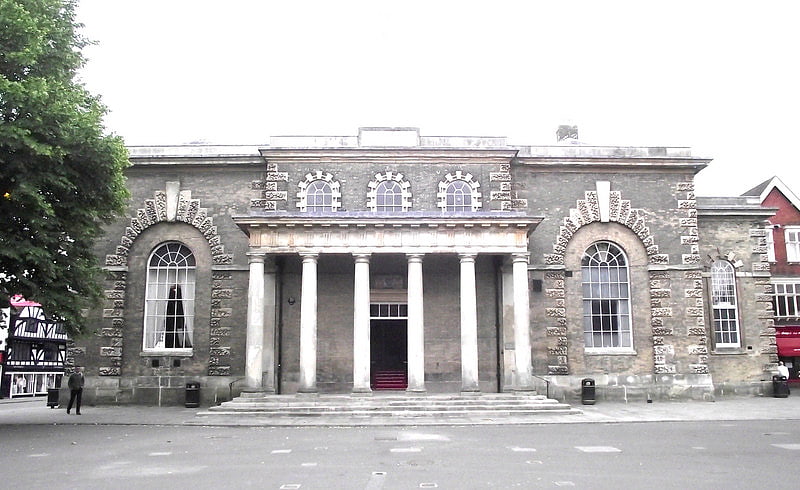
Event venue in Salisbury, England. Salisbury Guildhall is an 18th-century municipal building in the Market Place, Salisbury, England. It is a Grade II* listed building and is the meeting place of the Salisbury City Council.[7]
St Mary's Church, Wilton
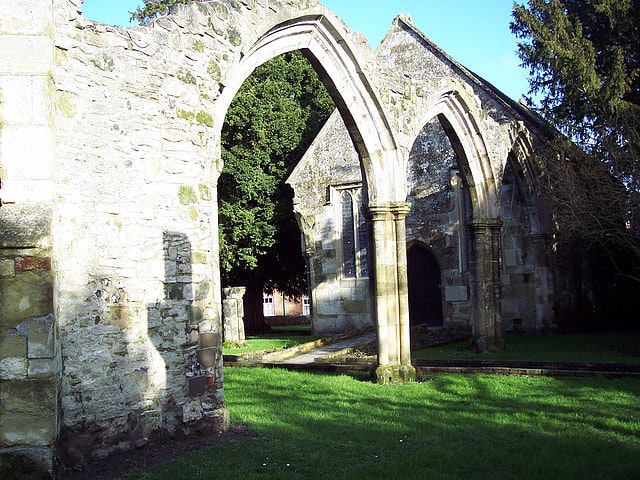
Church in Wilton, England. St Mary's Church in the Market Place of Wilton, Wiltshire, England, was built in the 15th century. It is recorded in the National Heritage List for England as a designated Grade II* listed building, and is now a redundant church in the care of the Churches Conservation Trust.
St Marys was built on the site of an earlier church at which Bishop Robert de Bingham was consecrated in 1229 before the completion of his cathedral church at Salisbury; his statue is still visible on the west gable. By the 9th century the Benedictine convent of Wilton Abbey was attached to the church. During the 14th and 15th centuries other medieval churches in Wilton closed and combined with St Mary's which was rebuilt and expanded to become, by the 16th century, the sole parish church. In 1441 parish records include the purchase of a great bell and around 1628 a carved pulpit was installed. In the early 19th century a parish rate was levied for the restoration of the church and a chandelier and pulpit sconces were bought to enable evening services.
In 1845 a new Church of England parish church of St Mary and St Nicholas was built at the instigation of the Countess of Pembroke and her younger son Baron Herbert of Lea, designed by the architect Thomas Henry Wyatt and D. Brandon in the Italianate Romanesque style, with considerable Byzantine influences. The bells and many memorials from the old church were transferred to the new.
As a result, the old church was partially demolished, apart from the chancel and one bay of the nave. The ruins consist of the three arches of the south arcade, fragments of the north arcade and the altered eastern arch of the west tower or west window within the churchyard.
Restoration was undertaken between 1933 and 1939 by Robert Worth Bingham, who was the United States Ambassador to the United Kingdom from 1933 to 1937, who claimed descent from Robert de Bingham. The church was declared redundant on 30 May 1972, and was vested in the Trust on 15 November 1977.[8]
St Lawrence
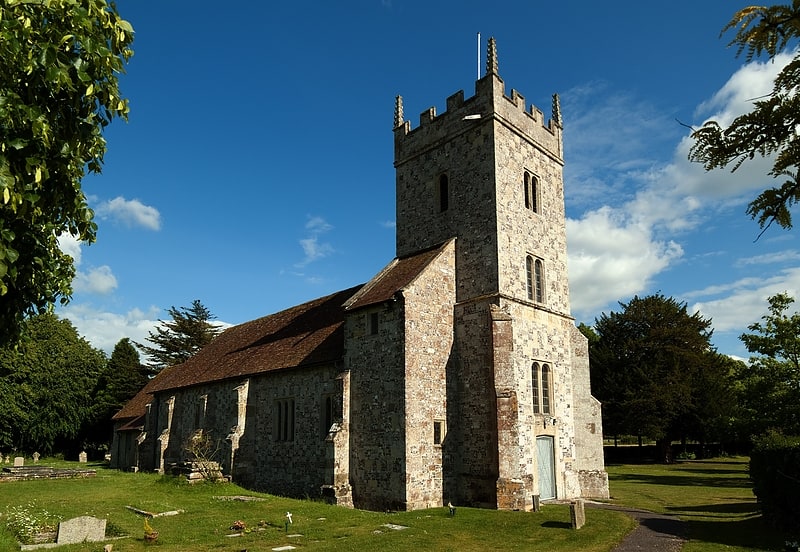
St Lawrence's Church at Stratford-sub-Castle is a Grade I listed Church of England parish church, situated to the north of Salisbury. It stands close to the abandoned settlement of Old Sarum and about 2 miles north of Salisbury Cathedral.[9]
Church of St Martin

Building. The Church of St Martin, also known as Sarum St Martin, is a Church of England parish church in Salisbury, Wiltshire. The church dates back to the 13th century and is a grade I listed building.[10]
Salisbury Arts Centre
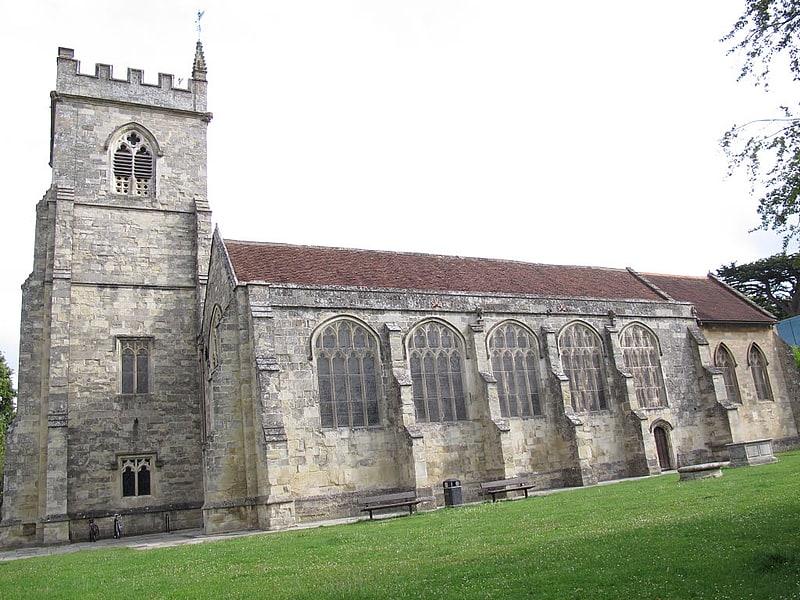
Theatre in Salisbury, England. Salisbury Arts Centre is a venue for theatre, music, dance, comedy, family shows, films, exhibitions, and workshops in Salisbury, Wiltshire, United Kingdom. It is run by Wiltshire Creative, a charity which provides opportunities for members of the community to experience the arts.
The centre stages a range of educational and community events, many of them free, and it also participates at events in and around the city, including the Larmer Tree Festival.
The centre is housed in the deconsecrated St Edmund's Church on Bedwin Street in central Salisbury. Its main performance space can hold 164 people seated or 400 standing. It also has a studio space called the White Room that seats 60, a media space, a multi-purpose arts and crafts space, a pottery studio, an exhibition space, a café, a bar, and staff offices.[11]
Address: Bedwin St, SP1 3UT Salisbury
St Paul's Church
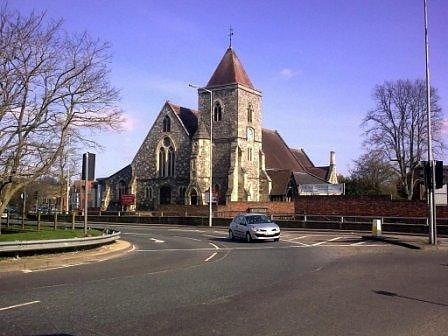
Church in Salisbury, England. St Paul's Church, Salisbury, England, is located on the north-west side of the city, next to St Paul's Roundabout and a short walk from the city centre and Salisbury train station. It is an Anglican church.[12]
Address: Fisherton St, SP2 7QW Salisbury
St Francis Church
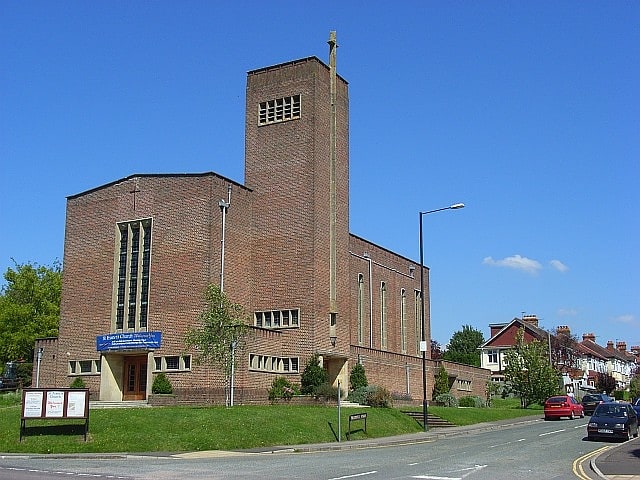
Evangelical church in Salisbury, England. St Francis Church, Salisbury is an evangelical, charismatic, Church of England parish church in Salisbury, Wiltshire, England, a member of the New Wine Network of churches. The church stands in the north of Salisbury, on the A345 Castle Road. Some two hundred people attend its main services.[13]
Address: Beatrice Rd, SP1 3PN Salisbury
Bulford Kiwi
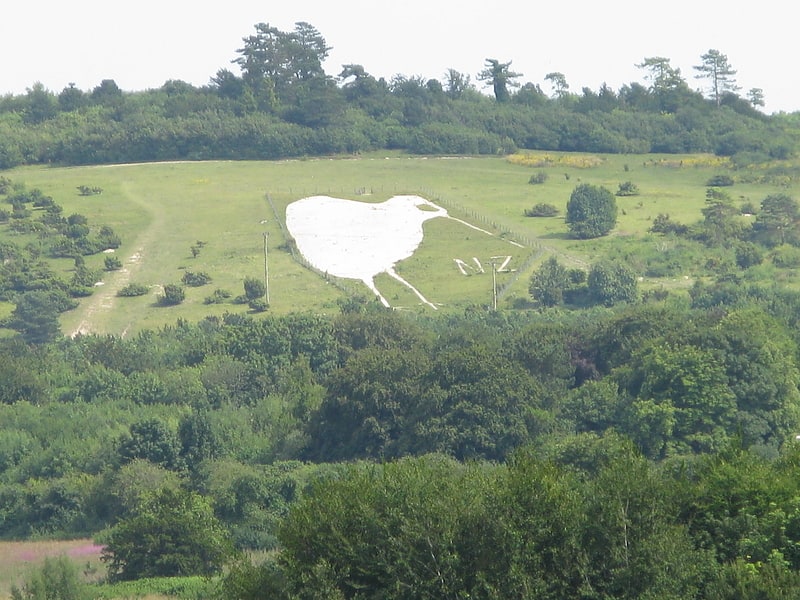
Tourist attraction in England. The Bulford Kiwi is a large depiction of a kiwi, carved in the chalk on Beacon Hill above the military town of Bulford on Salisbury Plain in Wiltshire, England. It was created in 1919 by soldiers of the New Zealand Expeditionary Force who were awaiting repatriation following the end of First World War.
It is one of the few hill figures in Wiltshire to be neither a white horse nor a military badge.[14]
Address: Canberra Drive (not numbered), Salisbury
Old Sarum Cathedral

Cathedral. Old Sarum Cathedral was a Catholic and Norman cathedral at old Salisbury, now known as Old Sarum, between 1092 and 1220. Only its foundations remain, in the northwest quadrant of the circular outer bailey of the site, which is located near modern Salisbury, Wiltshire, in the United Kingdom. The cathedral was the seat of the bishops of Salisbury during the early Norman period and the original source of the Sarum Rite.[15]